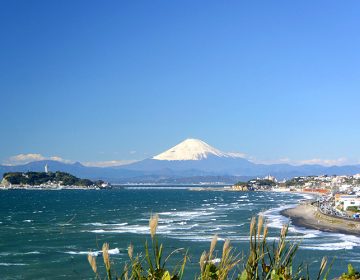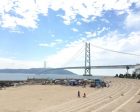
Presenting you Power Spots around Kanagawa! From the standard to the lesser known. How about taking a rental car to these Power Spots? Recommended for sightseeing spots!
In the vast and charming Kanagawa, you will find Kamakura with its many historical temples and shrines, as well as the hot springs of Hakone.
Article published by: Jalan Rent-a-Car
* Introduced facilities are excerpted from Jalan.net Sightseeing Guide
* Pictures and information published are not guaranteed to be up to date. Please be sure to verify yourself beforehand.
Hakone Shrine

Source: Jalan Tourism Guide – Hakone Shrine
Built in 757, at the dawn of the Tenpyo-hoji era, by Mangan Shonin, who was once known as Hakone Sansho Gongen. The faith of many was gathered in these sacred mountain grounds. Beginning the Kamakura era, its name became highly regarded by dignitaries of the Kamakura shogunate, representing Minamoto no Yoritomo. The wooden Mangan Shonin statues (important cultural property) was the first of many wonderful shrine treasures we have today. It is worshipped as the deity of safe traveling, wish granting, misfortune dispelling, and business starting. The 800 years old cedars adorning the road to the shrine give it a truly holy aura.
\Selected reviews/
A trip to Hakone cannot miss a visit to the Hakone Shrine. It’s a very famous power spot.
It is visited both by Japanese and foreigners in large amounts.
(Date of visit: October 2018)
A scarlet colored Torii gate and verdant trees. Fresh and clean air.
We prayed at a large cedar tree in preparation for our daughter’s first childbirth.
I could feel the intensity of its trunk stretching straight up.
(Date of visit: October 2018)
Address: 80-1 Motohakone, Hakone-machi, Ashigarashimo-gun, Kanagawa 250-0522
Traffic access: (1) 60 minutes by bus from the Odawara Station
Opening hours: Every day
Visits: Free
Fees: Admission fee to the treasure house: Adults: 500 yen (Middle schooler or older)
Children: Admission fee to the treasure house 300 yen, (Grade schooler or younger)
Other Cultural Assets: Important cultural property wooden Mangan Shonin statues
Other: Three toilets
Other information: Established in 757
Inquiries to 0460-83-7123
Enoshima Shrine
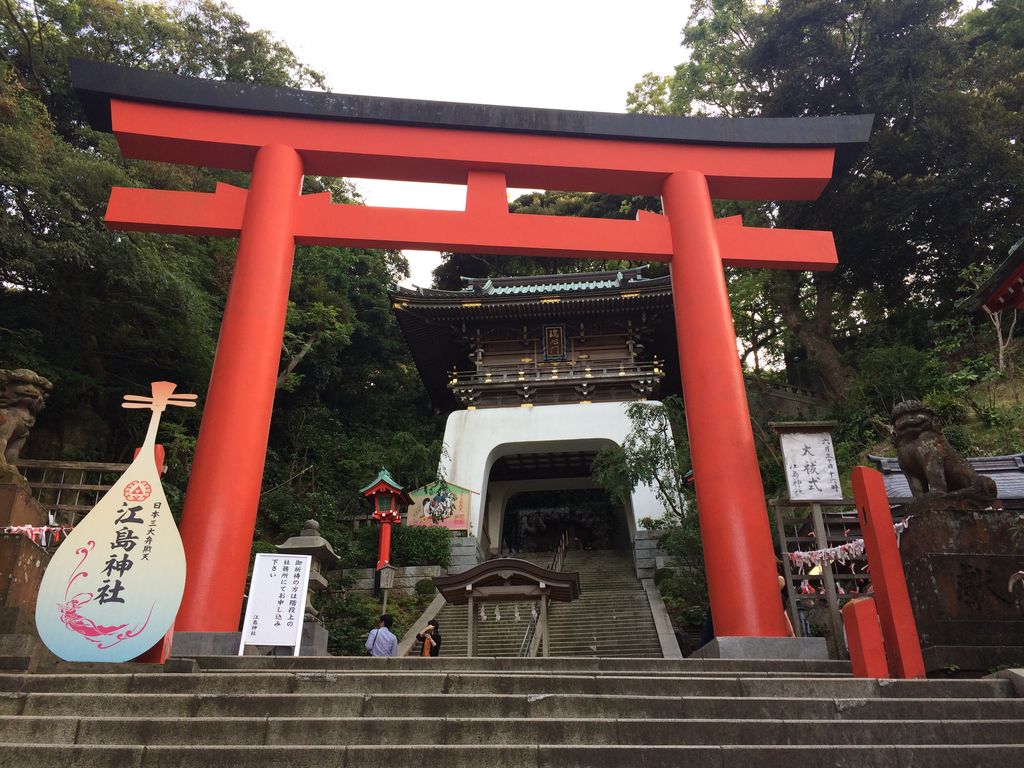
Source: Jalan Tourism Guide – Enoshima Shrine
Enoshima Shrine is a title that encompasses the three shrines of Hetsumiya, Nakatsumiya and Okutsumiya, with each hosting a goddess that acts as their guardian deity. She is worshipped as a deity with expertise in performing arts that invites safe traveling, bountiful fishing and harvest, as well as good fortune and treasures.
\Selected reviews/
It’s located in the path leading up to the viewing platform of Enoshima. She seems to be well known as a goddess of love, and they had many cute Ema plaques.
(Date of visit: May 2017)
I went there with my friends. I meant to visit it with marriage related reasons, but we ended up having a lot of fun. I really hope this granted us the grace of the goddess.
(Date of visit: December 2016)
Address: 2-3-8 Enoshima, Fujisawa, Kanagawa 251-0036
Traffic access: (1) 20-minute walk from the Odakyu Katase-Enoshima Station
Opening hours: 8:30-17:00 (Hoan-den building)
Fees: Adults: 150 yen, Hoan-den, 100 yen for groups of 25 people or larger
High schoolers: 100 yen, Hoan-den, 70 yen for groups of 25 people or larger
Middle schoolers: 100 yen, Hoan-den, 70 yen for groups of 25 people or larger
Grade schoolers: 50 yen, Hoan-den, 40 yen for groups of 25 people or larger
Other Cultural Assets: Statues of Happi Benzaiten, Prefectural designated important cultural properties
Barrier free facilities, with guide dogs available
Other information: Established in 552
Inquiries 0466-22-4020
Homepage: http://www.enoshimajinja.or.jp/
Zeniarai Benzaiten Ugafuku Jinja Shrine
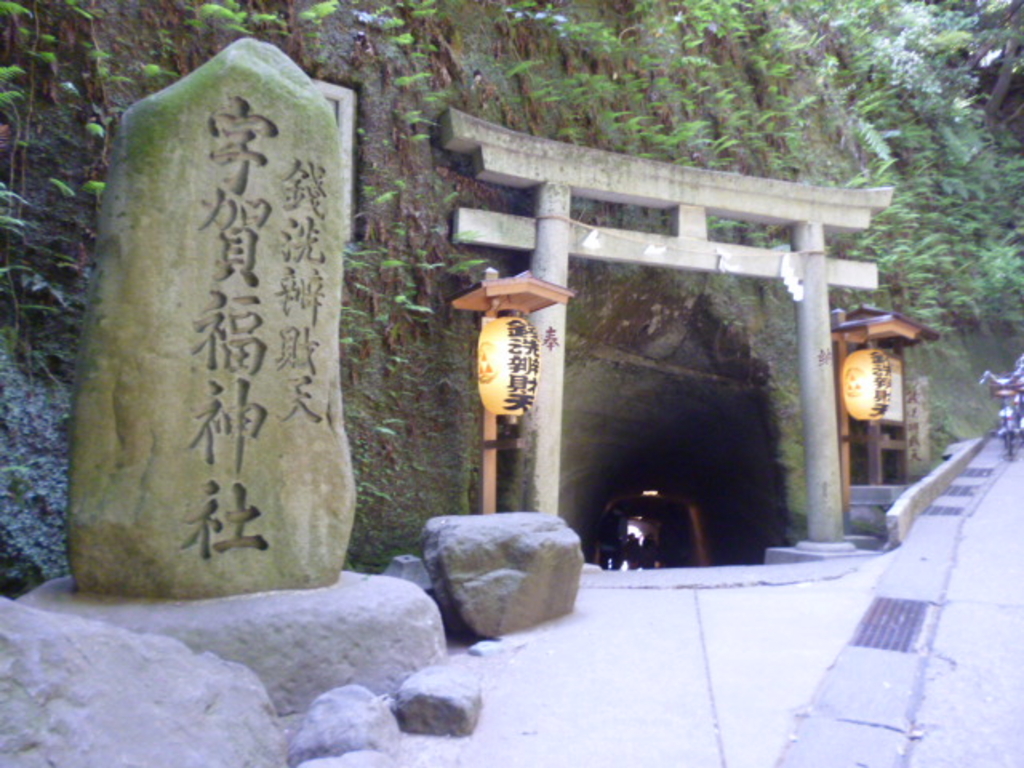
Source: Jalan Tourism Guide – Zeniarai Benzaiten Ugafuku Jinja Shrine
It is said to have been built after Minamoto no Yoritomo, who wished for world peace, once had a dream on 1185, during the year, month, and night of the serpent, that informed him “Offer this water to the gods and there shall be peace across the land.” Afterwards, Hojo Tokiyori adopted a tradition of washing his sen coins here to pray for a prospering household, a custom that was then followed by many who sought the blessing of good fortune. Zeniarai coin washing is now one of the five Kamakura brand-name spring water.
\Selected reviews/
There were people who seemed to be washing small coins, and bills even.
Many people visiting here believed using this cleansed money will bring them many riches.
(Date of visit: August 2018)
Her deity Benten is famous for bringing fortune to those who wash their money in the fountain water. I also washed my coins. I hope I receive those blessings as well.
(Date of visit: October 2017)
Address: 2-25-16 Sasuke, Kamakura, Kanagawa 248-0017
Traffic access: (1) 25-minute walk from the Kamakura Station
Opening hours: Visits received during 8:00-16:30
Other blessings: Academical fulfillment
Other information: Established in 1185
Inquiries: 0467-25-1081
Homepage: http://www.city.kamakura.kanagawa.jp/kamakura-kankou/
Check here for more details about Zeniarai Benzaiten Ugafuku Jinja Shrine
Oyama Afuri Shrine
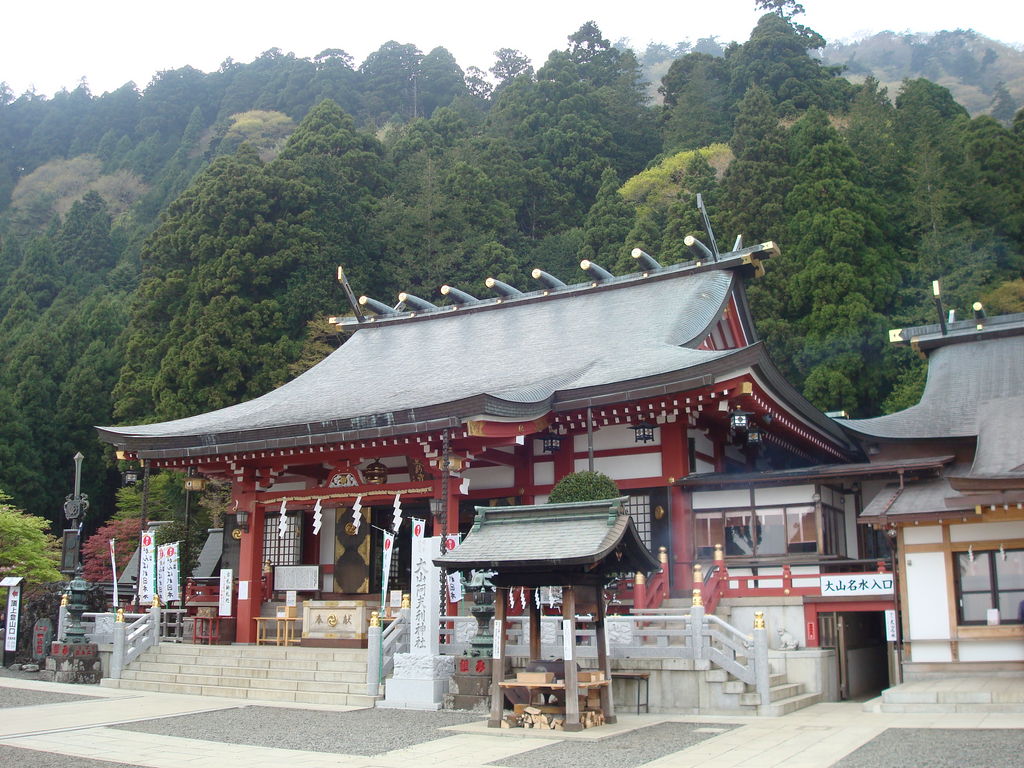
Source: Jalan Tourism Guide – Oyama Afuri Shrine
An ancient shrine that worships Oyamatsumi-no-kami, Ikazuchi-no-Kami and Takaokami. The deities of agriculture, safe sailing, and big catches. The souvenir shops and tea houses at the entrance are reminiscent of ancient times.
\Selected reviews/
The verdant nature gave off a grateful and clean air. It is considered a power spot with a very majestic atmosphere. You will walk quite a lot even if you use the cable car, so I recommend you wearing comfortable shoes.
(Date of visit: October 2014)
The cool breeze felt comfortable. Viewing the Sagami Bay on its entirety from the shrine ground was truly wonderful. My spirit felt strangely calm, it made me feel I could face another day with all my strength.
(Date of visit: June 2017)
Address: 12 Oyama, Isehara-shi, Kanagawa 259-1107
Traffic access: (1) 25 minutes by bus from the Isehara Station
15 minutes on foot
6 minutes by other means
Opening hours: Monday to Friday, 9:00-16:30, Please check the operating hours of the cable car when visiting the lower shrine
Opening hours: Weekends, 9:00-17:00, Please check the operating hours of the cable car when visiting the lower shrine
Fees: Adults: Charge-free
Other: One restroom
Other information: Established in 97 BC
Inquiries: 0463-95-2006
Kuzuryu Shrine
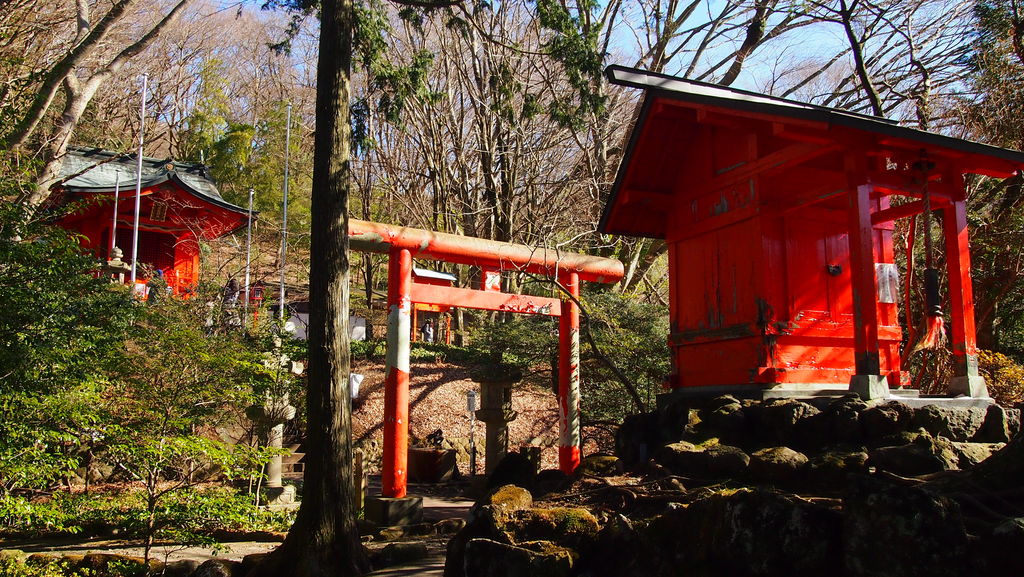
Source: Jalan Tourism Guide – Kuzuryu Shrine
A crimson torii gate stands in the middle of the lake. Every month on the 13th, a boat sails from Motohakone.
\Selected reviews/
It’s a shrine next to the Hakone Shrine.
Ruling over the abundant waters of Lake Ashi,
it is said if you bring the holy water with you and offer it to family altar,
you will receive its blessings.
Rinse your mouth with holy water and it will be cleansed.
Looking at the ever flowing water,
I did indeed feel it possessed some sort of divine blessing.
You can receive the red seal at the entrance of the Hakone Shrine.
(Date of visit: September 2018)
I visited Kuzuryu Shrine. It can be found right next to Hakone Shrine, and is said to be a famous power spot for love. I have the impression there were many female visitors.
(Date of visit: March 2015)
Address: Motohakone, Hakone-machi, Ashigarashimo-gun, Kanagawa 250-0522
Traffic Access: (1) 60 minutes by bus from the Odawara Station
20 minutes by boat
Other information: Unknown establishment date
Inquiries: 0460-83-7123
Sasukeinari Shrine
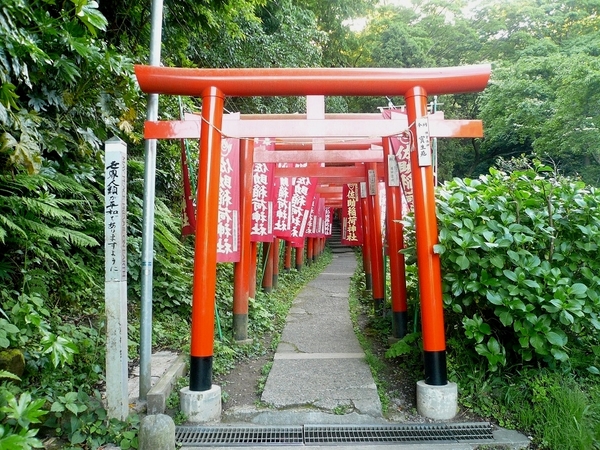
Source: Jalan Tourism Guide – Sasukeinari Shrine
Passing through dozens of torii gates adorned with red flags, you will find a shrine pavilion as you climb the steps. According to its history, when Minamoto no Yoritomo was exiled in Izu, he had a revelation in a dream, where the Inari of a Hidden Village would urge him to rise up. It was then enshrined under the name of Sasukeinari.
\Selected reviews/
I visited the Sasukeinari Shrine. The many red torii left an impressive image on me. It seems to grant blessings on your career and job.
(Date of visit: May 2018)
It’s right next to Zeniarai Benzaiten. Those multiple red torii tunnels had a very mysterious air to them. It’s very well known as a power spot.
(Date of visit: May 2013)
Name: Sasukeinari Shrine
Address: 2-22-12 Sasuke, Kamakura, Kanagawa 248-0017
Traffic access: (1) 25-minute walk from the Kamakura Station
Other blessings: Prosperous business
Blessings: Successful career
Other information: Kamakura era: 1190-1198
Inquiries: 0467-22-4711
Homepage: http://www.city.kamakura.kanagawa.jp/kamakura-kankou/
Hotoku Ninomiya Shrine
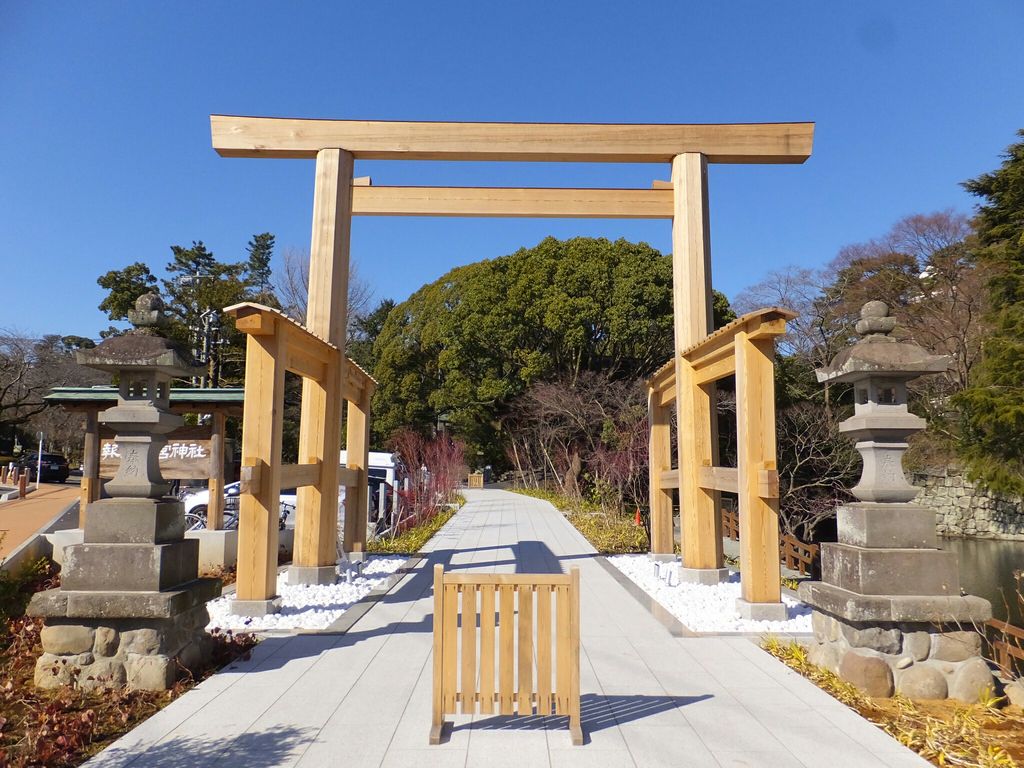
Source: Jalan Tourism Guide – Hotoku Ninomiya Shrine
Enshrines Sontoku Ninomiya. The Hotoku Museum is also found nearby.
\Selected reviews/
A power spot in Odawara, Kanagawa
This is a shrine within the castle grounds of Odawara.
Although the structure is not that big,
you can really feel the history in its walls.
This shrine takes its roots on Hotoku’s spirit, and seems to bring good luck with your partner.
(Date of visit: December 2016)
I visited Hotoku Ninomiya Shrine. Since I started collecting red seals, I always wanted to visit there. It’s right next to Odawara Castle, and enshrines the deity of academic fulfillment. I feel it granted me some of its power.
A staff of the shrine office stamped red seal for me at the office after my visit.
(Date of visit: December 22nd 2015)
Address: 8-10 Jonai, Odawara, Kanagawa 250-0014
Traffic Access: (1) 15-minute walk from Odawara Station
Other information: Established in 1894
Inquiries: 0465-22-2250
Manazuru Hanto Prefectural Natural Park
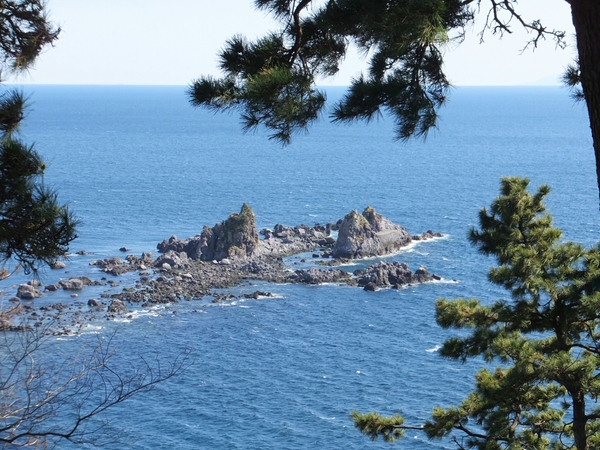
Source: Jalan Tourism Guide – Manazuru Hanto Prefectural Natural Park
With huge black pines, beech and camphor trees growing tall in its plentiful forest and sea, Cape Manazuru is a natural park that projects into the Sagami Bay. There are many esplanades installed within its grounds, making it a very popular walking course where visitors experience the sounds of the sea as they listen to the chirping of birds and smell the scent of the leaves.
\Selected reviews/
The giant trees at the tip of the peninsula are jaw-dropping to see. They don’t seem to care a single bit about growing so close to the sea. It might just be the energy flowing from Mt. Fuji what truly makes this a power spot.
(Date of visit: August 12th in 2017)
Address: Manazuru, Manazuru-machi, Ashigarashimo-gun, Kanagawa 259-0201
Traffic Access: (1) 10 minutes by bus from the Manazuru Station
Fees: Adults: Charge-free
Other: Eight restrooms
Parking: Free (Part of the parking lot charges during summer season)
Inquiries: 0465-68-2543
Homepage: http://www.manazuru.net
Check here for more details about Manazuru Hanto Prefectural Natural Park
Hongakuji Temple
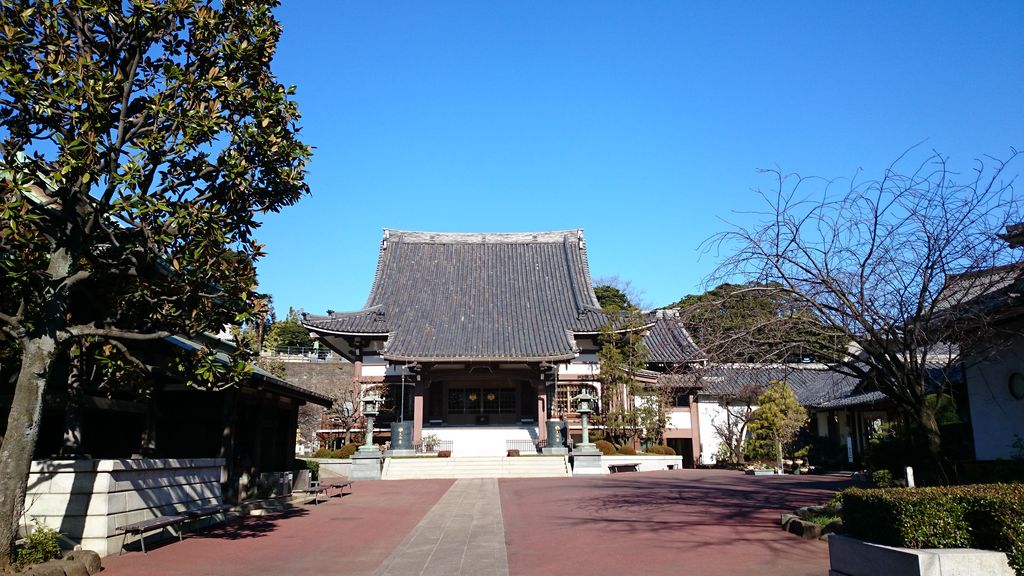
Source: Jalan Tourism Guide – Hongakuji Temple
The USA consulate was established here when Port Yokohama opened. American flags adorn the pine trees within the grounds, and it is said that the temple gate was painted white by the consulate members.
\Selected reviews/
My hobby is visiting temples, so taking a trip to Hongakuji Temple was a lot of fun, I really recommend this tourist spot.
I do believe it is a fantastic power spot to soothe the spirit.
(Date of visit: October 6th in 2015)
They sell a small charm called Nigirifuku. They’re handmade and each has a different face. Apparently, they’ll grant you a blessing if you hold them every day.
(Date of visit: June 2013)
Address: 1-2 Takashimadai, Kanagawa-ku, Yokohama, Kanagawa 221-0833
Traffic access: (1) 5-minute walk from the Kanagawa Station
Other information: Established during the Kamakura era
Inquiries: 045-322-0191
Homepage: http://www.hongakuzenji.jp/
Hashirimizu Shrine

Source: Jalan Tourism Guide – Hashirimizu Shrine
\Selected reviews/
Traveling from Yokosuka to Kannonzaki, this is a shrine you can find a bit before arriving at the Kannonzaki Park. It’s a small shrine, but its origins seem to be fairly ancient. It’s very well known as a power spot. Its grounds were serene and had a divine aura to them.
(Date of visit: August 2016)
This shrine is known as a power spot of Yokosuka.
If you turn around at the front shrine as you climb the stairs, you will get a perfect view of the Boso Peninsula and the boats leaving the Tokyo Bay in front of it.
(Date of visit: February 2017)
Address: 2-12-5 Hashirimizu, Yokosuka, Kanagawa 239-0811
Traffic Access: (1) Train/Bus: Keihin Kyuko. Take a bus from the Maborikaigan Station heading to Kannonzaki and get off at Hashirimizu Shrine. 2-minute walk.
(2) Car: Yokohama Yokosuka Road, leave the Maborikaigan IC and turn right towards Kannonzaki, then turn right before the bus stop of Hashirimizu Shrine (Family Mart).
Opening hours/Visit time: Visits are welcome all day long, the shrine office is open 9:00-15:00
Other: The chief priest has a post in the Kano Shrine (Nishi) (Phone number: 046-8410-1179) and thus is not permanently stationed at Hashirimizu Shrine. For prayers, exorcisms, and related services, please refer to the Kano Shrine (Nishi).
Parking: Due to the few available spaces and the narrow roads leading to the parking lot, large vehicles cannot access. Please be aware.
The Byakushin of Joganji Temple

Source: Jalan Tourism Guide – The Byakushin of Joganji Temple
As you climb the stone steps of Joganji Temple, facing right when heading to the main shrine you will see a huge byakushin tree. It is estimated to be 800 years old, and is 20 meters tall, with a circumference of 6 meters. It is considered a national protected monument (designated on September 1939).
\Selected reviews/
The national designated natural monument that is the huge byakushin tree is mystic.
I visited it right after Gosho Shrine during my power spot trip.
It seems to be a power spot that strengthens friendships.
(Date of visit: January 2017)
This byakushin is said to have lived for 800 years.
Byakushin are trees that stretch out as they twist themselves, so it was very different from the big trees that grow straight up I’ve seen so far.
I couldn’t help but feel the energy coming from its powerful, twisting trunk.
(Date of visit: March 2016)
Address: Shirohori, Yugawara-machi, Ashigarashimo-gun, Kanagawa 259-0305
Traffic access: (1) 10-minute walk from the Yugawara Station
Opening hours: Open every day of the year
Fees: Charge-free
Other: National natural monument
Parking: Can be found climbing the slope, near the entrance. Space for about ten vehicles
Inquiries: 0465-62-4010
Homepage: http://www.yugawara.or.jp/sightseeing/details.php?log=1365468525
Check here for details about The Byakushin of Joganji Temple
*This article was composed with information as of November 2018
*The contents published here may differ from the actual conditions. Please follow the current regulatory signs, etc.

Let’s enjoy Japan!
We present various information that could prove handy to travelers when they explore Japan’s 47 prefectures, including spots that have been generating a lot of buzz, fun events and delicious food!


